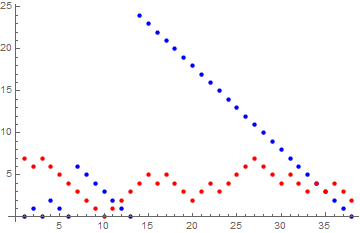If ${\cal S}$ is a collection of functions $f:\omega\to\omega$ we say that ${\cal S}$ is meetable if there is a "global function" $g:\omega\to \omega$ such that for every $f\in {\cal S}$ there is $n\in\omega$ such that $g(n) = f(n)$.
Let ${\cal S}^{\pm 1}$ denote collection of functions $f:\omega\to\omega$ such that $|f(n) - f(n+1)| = 1$ for all $n\in\omega$ and for $k\in\omega \setminus \{0\}$, let ${\cal S}^{\pm 1}_{\leq k} = \{ f\in {\cal S}^{\pm 1}: f(0) \leq k\}$.
Is ${\cal S}^{\pm 1}$ meetable? If not, is ${\cal S}^{\pm 1}_{\leq k}$ meetable for all $k\in\omega\setminus\{0\}$?
(User Wojowu pointed out in a comment below that ${\cal S}^{\pm 1}_{\leq 1}$ is meetable.)

